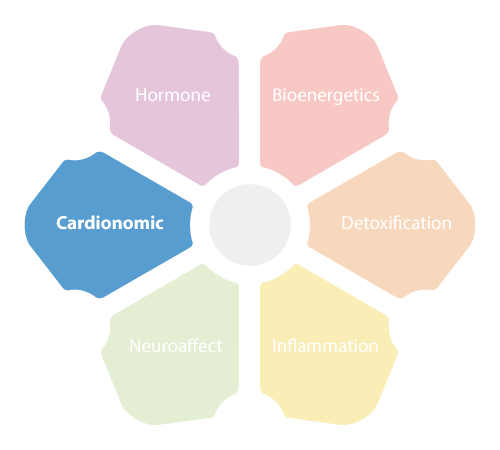 For some reason, not many people recognize walking as a real workout. Perhaps it’s too easy, too common, too enjoyable, or too relaxing to be considered a serious form of exercise. But exercise is actually one of the biggest benefits of walking. In fact, the best thing about this delightful activity is that it’s one of the easiest exercises you can do on a consistent basis. Many health coaches, doctors, and fitness trainers will tell you, the best form of exercise is one you’ll actually maintain.
For some reason, not many people recognize walking as a real workout. Perhaps it’s too easy, too common, too enjoyable, or too relaxing to be considered a serious form of exercise. But exercise is actually one of the biggest benefits of walking. In fact, the best thing about this delightful activity is that it’s one of the easiest exercises you can do on a consistent basis. Many health coaches, doctors, and fitness trainers will tell you, the best form of exercise is one you’ll actually maintain.
You don’t need fancy equipment, you don’t need to learn complicated moves, and you don’t need special attire—you can just put on some good sneakers, comfortable clothes, and maybe listen to a good playlist. That’s it! You can walk around the block, through the neighborhood park, or on a treadmill at your gym. It’s often gentle enough even if your health is compromised, such as those suffering from adrenal fatigue, while still providing many of the benefits you get from the recommended 30 minutes a day of walking at a brisk pace.
One tweak that can increase the benefits of this basic yet effective daily practice is to do it in the woods or at the beach. That way, you’re exposed to better air quality and the healing power of nature.
Grounding—sometimes called earthing—can be achieved by walking barefoot on grass, sand, or dirt and has been shown to reduce blood viscosity. Thicker blood increases your risk of heart disease but walking barefoot for even just a few minutes a day can dramatically decrease your chance of developing cardiovascular problems. This is best done barefoot on grass or sand or if you have to wear shoes, leather soles are recommended.
 A dysregulated NeuroEndoMetabolic (NEM) stress response system and fatigued adrenal glands can compromise your cardionomic circuit, making you more vulnerable to cardiovascular system issues. Under these circumstances, medium or high-intensity exercise can be quite counterproductive. Fortunately, you can still take advantage of the benefits of walking.
A dysregulated NeuroEndoMetabolic (NEM) stress response system and fatigued adrenal glands can compromise your cardionomic circuit, making you more vulnerable to cardiovascular system issues. Under these circumstances, medium or high-intensity exercise can be quite counterproductive. Fortunately, you can still take advantage of the benefits of walking.
If you don’t live near nature, don’t let that stop you from walking every day. Remember, the best exercise is the one you actually maintain.
Nowadays, stress is so common that it’s viewed as normal. But our bodies were not built to deal with chronic stress; they were designed to manage occasional periods of acute stress. If you are faced with chronic stress, your NEM will always be switched on. As a result, your adrenal glands will continuously produce large quantities of the main anti-stress hormone, cortisol, to meet this high demand. This marks the early stages of Adrenal Fatigue Syndrome (AFS).
Symptoms of AFS include fatigue, weight gain, sleep disturbances, anxiety, mild depression, hair loss, loss of libido, infertility, pre-menstrual syndrome (PMS), heart palpitations, salt and sugar cravings, hypoglycemia, frequent colds and flu, brain fog, and food and drug sensitivities.
Many symptoms are only visible once AFS has become more advanced, at which point the adrenal glands are so taxed that cortisol output significantly drops. This places more pressure on other organs and circuits of the NEM system, which must try to compensate for the loss of your body’s main stress defense. Some of this additional pressure is absorbed by the cardionomic circuit of the NEM system, comprised of the heart, blood vessels, and lungs.
One of the most important steps in the adrenal fatigue recovery process is reducing stress and rebalancing the NEM system. Exercise is a well-researched and proven way to reduce stress and increase mental health. Like all forms of exercise, one of the benefits of walking is that it releases endorphins, which interact with receptors in the brain and bring about feelings of wellbeing, increased self-esteem, increased pain tolerance, and even a sense of euphoria, often referred to as runner’s high.
But, when you’re debilitated—stages 3 and 4 of adrenal fatigue—most forms of exercise, including brisk walking, can be too much for your weakened adrenals. In this case, adrenal circulation exercises, adrenal breathing, and adrenal yoga should be performed according to your tolerance levels. If you can handle it, just a few minutes of extremely gentle walking could be beneficial. But it’s important to seek approval from an experienced medical professional first to prevent adrenal crashes and avoid a longer recovery period. However, if your adrenal fatigue is mild, brisk walking can be one of the best ways to recover.
 The role of the cardionomic circuit is to prepare your body for the fight-or-flight response by pumping oxygenated blood through your body. Disruptions to this circuit are common in those suffering from advanced adrenal fatigue and can cause shortness of breath, heart palpitations, hypertension, dizziness, cardiac arrhythmia, and breathlessness. In advanced AFS, you may experience postural tachycardia syndrome (POTS)-like symptoms, atrial fibrillation, and premature ventricular contractions (PVCs). If the disruption and symptoms continue, they can cause serious damage to your cardiovascular system.
The role of the cardionomic circuit is to prepare your body for the fight-or-flight response by pumping oxygenated blood through your body. Disruptions to this circuit are common in those suffering from advanced adrenal fatigue and can cause shortness of breath, heart palpitations, hypertension, dizziness, cardiac arrhythmia, and breathlessness. In advanced AFS, you may experience postural tachycardia syndrome (POTS)-like symptoms, atrial fibrillation, and premature ventricular contractions (PVCs). If the disruption and symptoms continue, they can cause serious damage to your cardiovascular system.
When your body experiences stress, three main hormones affect the cardionomic circuit: cortisol, norepinephrine, and epinephrine. The release of cortisol from your adrenals increases vascular tone, which constricts your blood vessels to increase blood flow. For acute stress that requires a quick response, this is not harmful but chronically high cortisol levels can increase your risk of coronary heart disease and high blood pressure.
The role of norepinephrine is to increase your heart rate and pulse strength. This is useful for certain tasks, for example, standing up from lying down. However, excess norepinephrine can cause your heart to beat much quicker than normal.
Finally, epinephrine (adrenaline) is released as an immediate and powerful response to a perceived threat. Adrenaline increases your heart rate to help you fight or flee from danger. Excess adrenaline can lead to an unnecessary increase in your heart rate that could compromise your circulation and destabilize your blood pressure.
 Exercise intolerance is a symptom of a dysfunctional cardionomic circuit and over-exercising can aggravate this condition further. Therefore, intense cardio is not a good idea if you’re recovering from adrenal fatigue or NEM dysregulation. Still, because mild exercise can aid in your recovery, consider starting with gentle workouts and building up from there.
Exercise intolerance is a symptom of a dysfunctional cardionomic circuit and over-exercising can aggravate this condition further. Therefore, intense cardio is not a good idea if you’re recovering from adrenal fatigue or NEM dysregulation. Still, because mild exercise can aid in your recovery, consider starting with gentle workouts and building up from there.
Again, one of the benefits of walking is that it can be a gentle exercise that you control. You can start off with just a few minutes and incorporate some deep breathing during your walks to help balance your cortisol, norepinephrine, and epinephrine levels. Once you’ve built up your tolerance, try walking for longer or increasing the pace.
One of the central issues in AFS is that it causes imbalances in the hormonal circuit of the NEM system. The hypothalamic-pituitary-adrenal (HPA) axis is the hormonal axis that is most intimately involved in your body’s response to stress. The HPA axis is a hormone cascade that sends signals from the hypothalamus and pituitary gland of the brain to stimulate the adrenal glands to secrete cortisol and other stress hormones.
Exercise has been shown to temporarily increase cortisol levels but over time, these levels decrease and stabilize.
The thyroid is also closely linked to the HPA and part of the hormonal circuit of the NEM system. Low thyroid function naturally follows low adrenal function and can increase fatigue and disrupt your basal metabolic rate and reproductive system.
One of the benefits of walking is that it can help boost the slow metabolism that accompanies hypothyroidism, and can also help ward off symptoms of a sluggish thyroid, such as weight gain and tiredness.
 As mentioned earlier, adrenal fatigue and an associated sluggish thyroid can lead to weight gain, especially around the middle. This can be due to a slowed metabolism as well as the need for cholesterol—one of the building blocks of cortisol—that accumulates near the adrenal glands for easy access. Cholesterol is stored in fat tissue, which is why abdominal obesity, or central obesity, is one of the symptoms of AFS.
As mentioned earlier, adrenal fatigue and an associated sluggish thyroid can lead to weight gain, especially around the middle. This can be due to a slowed metabolism as well as the need for cholesterol—one of the building blocks of cortisol—that accumulates near the adrenal glands for easy access. Cholesterol is stored in fat tissue, which is why abdominal obesity, or central obesity, is one of the symptoms of AFS.
Central obesity is strongly correlated with cardiovascular disease, more so than if excess fat is evenly spread across your body.
Since it’s not high intensity, you may not think that one of the benefits of walking is losing weight, but studies have shown that brisk walking does burn calories—up to 150 calories in 30 minutes, depending on your weight and your diet. If you eat a healthy diet, like the adrenal fatigue diet, you’ll find weight loss comes in a more gradual and sustainable way.
© Copyright 2015-2019 Michael Lam, M.D. All Rights Reserved.
Research shows that exercise is king, second only to diet, when it comes to leading a healthy lifestyle. But what about those that are fragile and in a weakened condition? For such people, intensive workouts actually make things worse. That’s where the benefits of walking become even more valuable.
